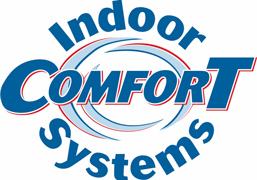
To avoid rising energy costs and work toward a more sustainable life, many homeowners are looking for ways to enjoy the same standards of comfort while reducing utility bills. As part of the Inflation Reduction Act, federal tax credits are available for upgrading to more efficient HVAC systems, such as air conditioners. These credits offer a big chunk of the installation costs, provided that homeowners work with eligible equipment and submit the appropriate form.
If you’re worried about a long, complicated process, we can share something that will help! Indoor Comfort Systems HVAC hopes this guide will give you everything you need to earn these HVAC tax credits in 2024. Here’s how.
Understanding the HVAC Tax Credits
These valuable tax credits for boosting your home’s energy efficiency are just one goal of the recent Inflation Reduction Act. Energy costs affect everyone, so helping homeowners upgrade to higher efficiency utilities can benefit everyone. The main intention of these credits is to reduce the cost of installing high efficiency upgrades. Two of note are the Energy Efficiency Home Improvement Credit and the Residential Clean Energy Credit.
Don’t forget, to be eligible for tax credits, you’ll have to complete IRS Form 5695. Additionally, this form needs to be submitted for the same tax year any upgrades were installed, not purchased.
Maximizing Savings with the Energy Efficiency Home Improvement Credit
Through 2032, the Energy Efficiency Home Improvement Credit provides up to $3,200 each year for energy-efficient home upgrades. This can be up to 30% of the total project’s cost. It's important to note in order to get back the maximum amount, you’ll have to make several investments. For example, you’ll save up to $2,000 for installing a higher efficiency heat pump. This can be paired with an additional $1,200 in credits for more projects in the tax year.
While new heat pump installation projects are a popular option for the tax credit, other HVAC upgrades like efficient furnaces and air conditioners also qualify. You’ll need to confirm that your choice’s energy efficiency rating is sufficient to qualify.
Residential Clean Energy Credit
The Residential Clean Energy Credit amounts to roughly 30% savings on a number of other residential clean energy efficiency projects. Eligibility only applies to homeowners looking for new clean energy solutions for their home. While the Home Improvement Credit highlights utilities and HVAC systems, this credit is instead designed around renewable energy sources like solar and wind energy.
Some key details of this tax credit include requiring the installation project to be finished between 2022 and 2032. But at the same time, homeowners can carry forward excess credit to offset future tax obligations. This is a great way to spread out costs and keep them more manageable.
What Else Is Eligible for These Tax Credits?
Because HVAC systems are one of the biggest portions of your monthly energy costs, these tax credits can guide you to the most energy-efficient options. But home energy efficiency can be improved in many other ways. Apart from the previously listed HVAC upgrades, {you could also choose|other eligible items include|you also have access to:
- Heat pump water heaters
- Modern electrical panel improvements
- New electrical wiring
- Insulation, air sealing and ventilation enhancements
- High-efficiency electric stoves, cooktops, ranges or ovens
- Efficient heat pump clothes drying solutions
- High-efficiency water boilers
Like the HVAC systems, you’ll need to verify that your preferred make and model features the required energy efficiency ratings.
Three Tips for Making the Most of 2024 HVAC Tax Credits
While any of these upgrades can boost home energy efficiency, a little planning will ensure they offer the most long-term benefits. Get the most from your HVAC tax credits with these three tips:
- Conduct a home energy audit to identify impactful upgrades. Rely on professional HVAC assessments for crucial advice.
- Enhance your home's envelope by addressing inefficient windows and doors.
- Look into rebates for clean energy projects from utilities. Renewable sources like solar, wind, and geothermal contribute to community power grid sustainability.
- Don’t forget financing options from local service companies, which can help reduce costs even more.
Secure Your 2024 HVAC Credits with Help from Indoor Comfort Systems HVAC
Partner with local HVAC professionals like Indoor Comfort Systems HVAC for eligible serves like energy assessments or new installation. Our seasoned installers can deliver whatever you need for a more energy-efficient home.
